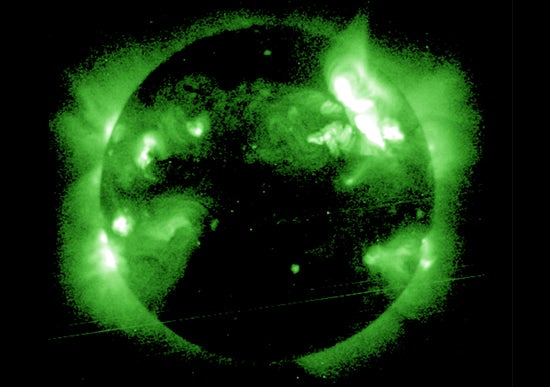Last week, NASA observed the largest solar flare of the year. The coronal mass ejection was one “powerful enough to cause a brief radio blackout.”
Indeed, there were some small instances of radio interference last week following the solar flare. While the event made for some spectacular photographs, it also drew attention to the fact that the nation is still unprotected from an electromagnetic pulse (EMP). Addressing the life-threatening danger posed by an EMP is vital to national security.
An EMP is a high-intensity burst of electromagnetic energy caused by the rapid acceleration of charged particles. Such a burst can come from either a high-altitude nuclear detonation or a natural solar flare. An EMP caused by terrorists or a rogue state could knock out electrical and communications grids, sending America back into the 18th century.
It may sound like the stuff of apocalyptic literature, but the truth is often scarier than fiction. As of now, the nation still has no safeguard against an EMP. The Department of Homeland Security has admitted that it is not adequately prepared to deal with such an attack. The commander of U.S. Cyber Command, General Keith Alexander, has made mitigating the threat of an EMP his top priority. The threat is certainly not unknown to members of government, but the country is still vulnerable.
A manmade EMP would come in the form of the blast from a nuclear weapon. Short- and long-range ballistic missiles are the best means of delivery for a high-altitude nuclear weapons detonation. A strong, comprehensive missile defense system would offer a degree of protection against such an attack.
However, there is little defense against a natural EMP, such as a solar flare. While the earth has natural protection in the sun’s geomagnetic field, even this protection has its limits. If a solar flare hit the currently unprotected national power grid, the results would be as devastating as a nuclear explosion. According to Heritage’s James Carafano:
Communications would collapse, transportation would halt, and electrical power would simply be nonexistent. Not even a global humanitarian effort would be enough to keep hundreds of millions of Americans from death by starvation, exposure, or lack of medicine.
The scenario of a nation-state using an EMP device against the U.S. is a real threat. As modern society is driven almost entirely on electronics, it is imperative to close this gaping hole in national security. To defend against such a solar flare or nuclear attack, communications and power grids need to be hardened. The nation needs an affordable, real plan for hardening the electrical grid.
Jordan Harms is currently a member of the Young Leaders Program at The Heritage Foundation. For more information on interning at Heritage, please click here.
